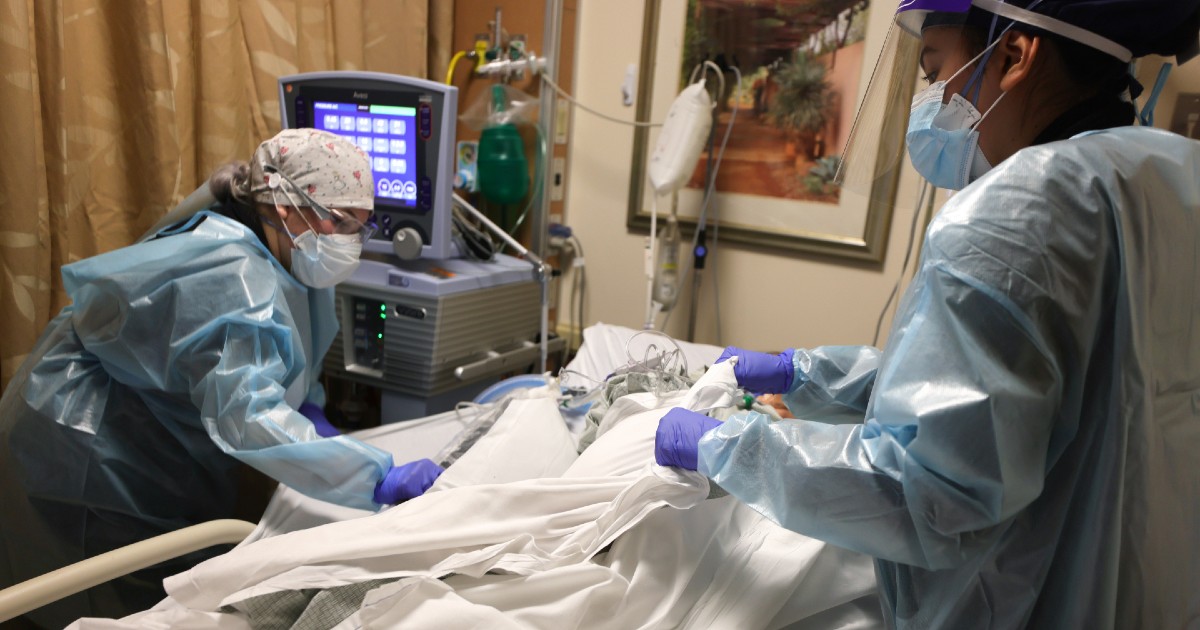The first proof-of-concept pilot study with a limited-lead, rapid-response electroencephalogram medical device, which measures the electrical activity of the brain, and Vision Transformer, a supervised deep learning method, detected changes associated with delirium before the onset of symptoms – when patients are more receptive to treatment.
WHY IT MATTERS
According to the study by lead author Malissa Mulkey, assistant professor in the College of Nursing at the University of South Carolina, nearly 80% of critically ill patients develop delirium and clinicians detect less than 40% of cases when using a validated screening tool.
When the duration and severity of delirium increases it becomes more difficult to treat, increasing morbidity and mortality as well as costs, the authors say in their report published last month in Nature.
“As a result, delirium is associated with a one-year increase in the economic burden of more than $44 thousand/patient, making it a global public health crisis.”
The study team, which included engineers and IT specialists from the University of East Carolina and Purdue University, analyzed 15 different artificial intelligence models and tested critically ill older adults aged 50 years or older that required mechanical ventilation for greater than 12 hours with the EEG devices.
Between March 2019 and March 2020, they applied a headband with electrodes that detect the shape, amplitude and oscillation speed of EEG waveforms to 12 patients without acute brain injuries, seizures or other conditions preventing participation in cardiac, medical and surgical intensive care units at a large rural academic medical center in North Carolina.
The researchers retrieved data samples containing eight sensor readings of all of the patient’s cerebral lobes every four minutes over the course of one hour from the EEG handheld devices. Then, the researchers assessed for delirium using the standard Confusion Assessment Method for the ICU.
The first type of input data was preprocessed muscle movement and device interference removal while and the second type of input received only preprocessing with individual component analysis, i.e., noise removal.
The ViT model – running on NVIDIA GPUs according to a post on the company’s blog last week – provided 99.9%+ training and 97% testing accuracy across models.
The researchers said using a deep learning model makes it possible for clinicians to make better delirium assessments with minimal training. They say currently, less than 10% of clinicians report routinely screening for delirium.
“In the ICU environment, many patients are unable to participate in delirium screening, such as those in a comatose or deeply sedated state, and are therefore, untestable,” the study authors said.
With a neural network and data from a handheld medical device, nurses and clinicians with minimal training could take patient EEG measurements and detect the changes associated with delirium faster than bedside assessments that require patient participation, according to the research.
They also said that while the ViT model provided “satisfactory” performance in the study and could be improved, the methodology could limit “the need for skilled interpretation required when using traditional EEG.”
While AI could fill the gap for busy neurologists or a shortage of them across a health system in the future, the authors say that the pilot study showed that the AI-driven diagnostic could expedite essential care for patients.
“Despite the use of a sequence extraction method for preprocessing, 97% accuracy is significantly better than the ~ 40% accuracy of clinician-derived CAM-ICU assessments,” they pointed out.
“Earlier intervention may shorten the hospital length of stay, increase a patient’s chance to go home after hospital discharge, decrease mortality rates and reduce the financial burden associated with delirium,” they added.
THE LARGER TREND
In January, John Hopkins released research where AI models predicted ICU delirium risk using electronic health record data from 200,000 intensive care unit stays at 208 hospitals.
“For a lot of these physiological transitions, we think that there are early warning signs that may not be obvious to a clinician but can be picked up on using the kinds of artificial intelligence-supported pattern analysis that we used here,” said Dr. Robert Stevens, associate professor of anesthesiology and critical care medicine at the Johns Hopkins University School of Medicine and senior author of the study, in the statement.
ON THE RECORD
“Even when these tools are used, delirium remains difficult to recognize and therefore frequently underdiagnosed and undertreated,” the researchers said in their report.
“Once early detection of brain dysfunction associated with poor outcomes, such as the need for institutionalization and higher mortality, are readily available, it will be possible to identify reversible causes, followed by early intervention and close monitoring to avoid preventable complications. Having a physiologic method for delirium detection may provide an opportunity to provide interventions when delirium is more amenable to treatment.”
Andrea Fox is senior editor of Healthcare IT News.
Email: [email protected]
Healthcare IT News is a HIMSS Media publication.
Source: Read Full Article
